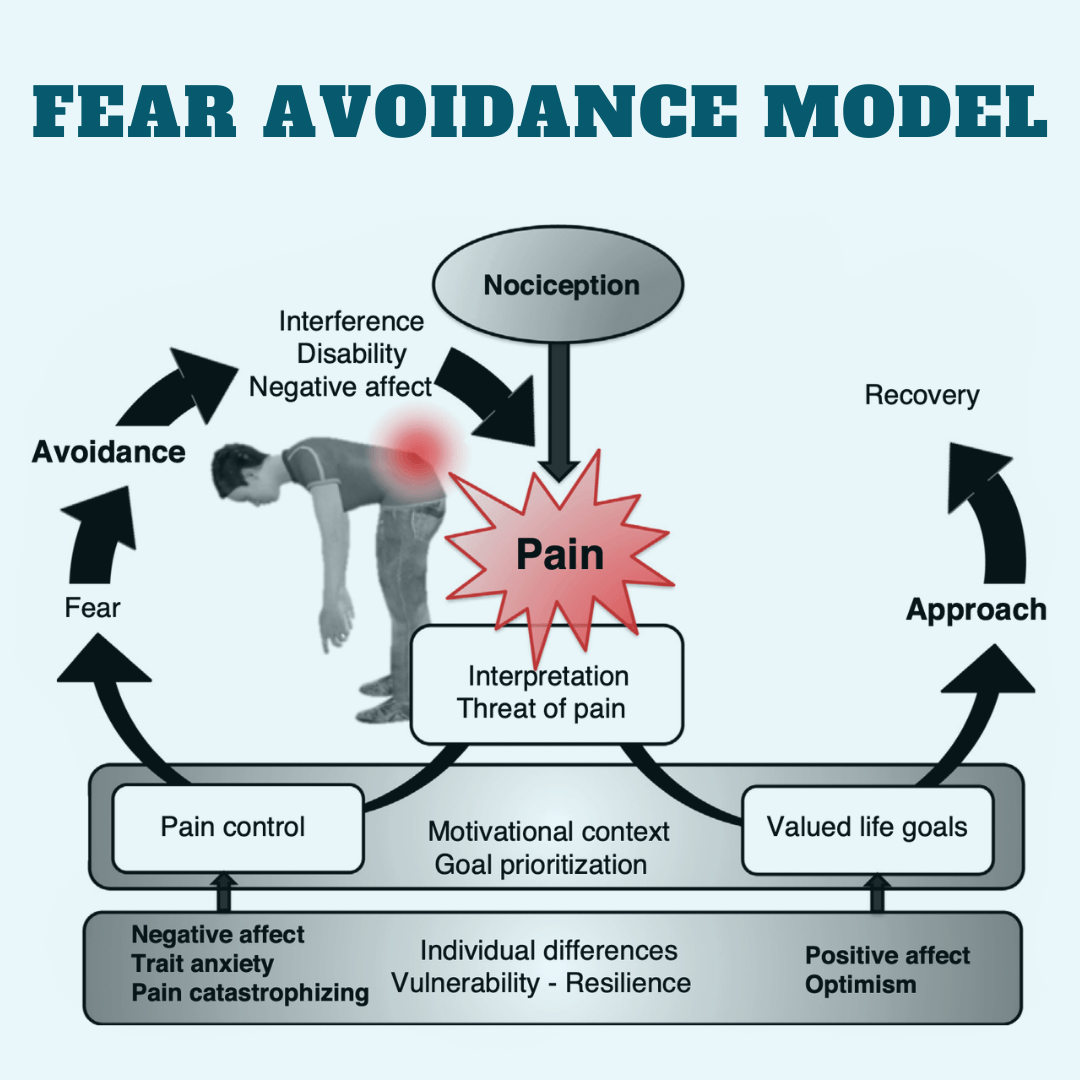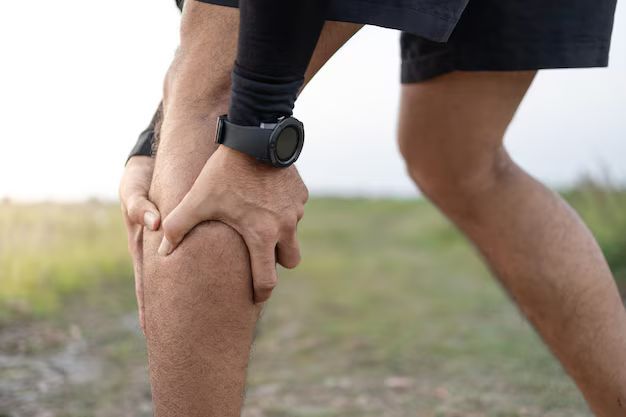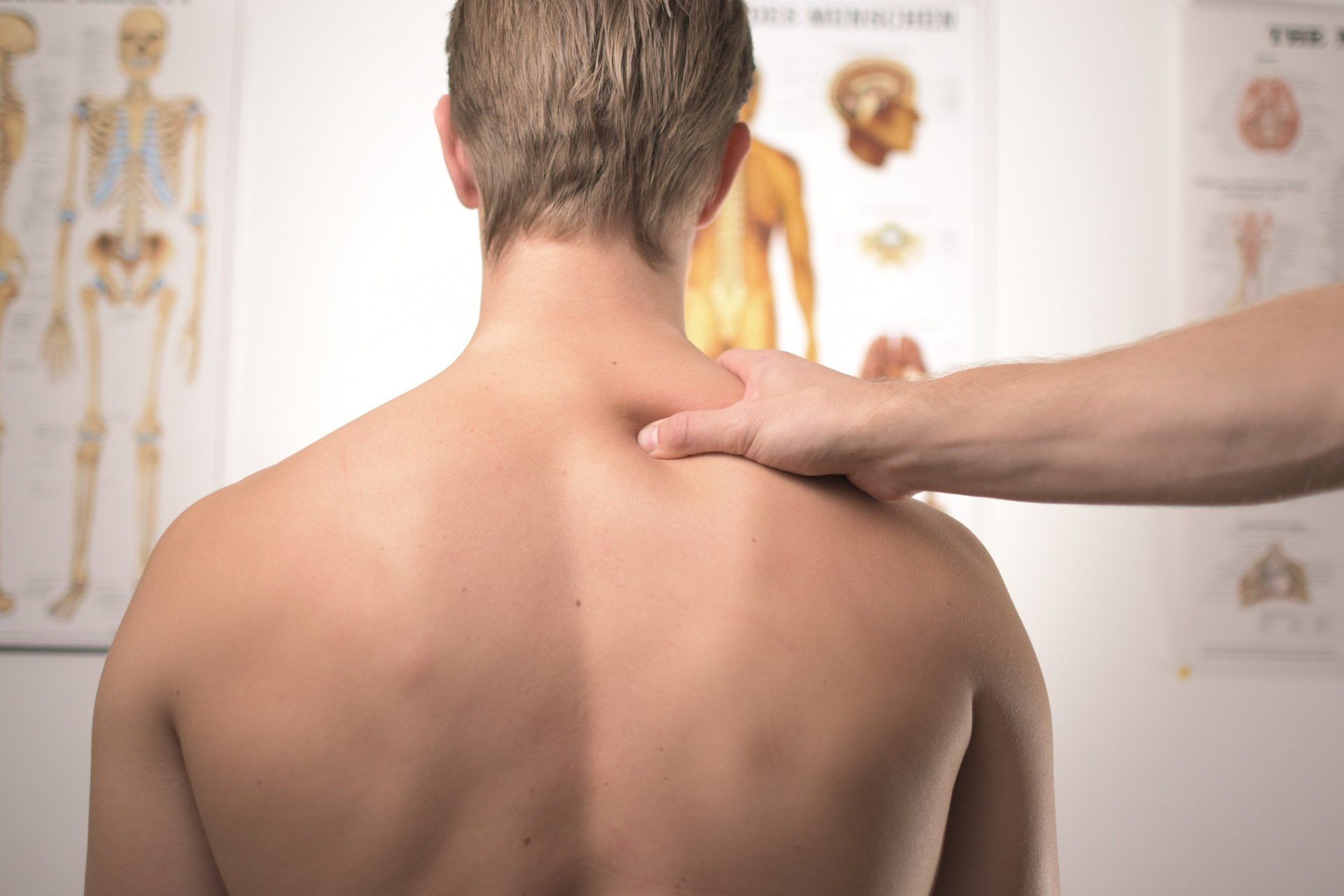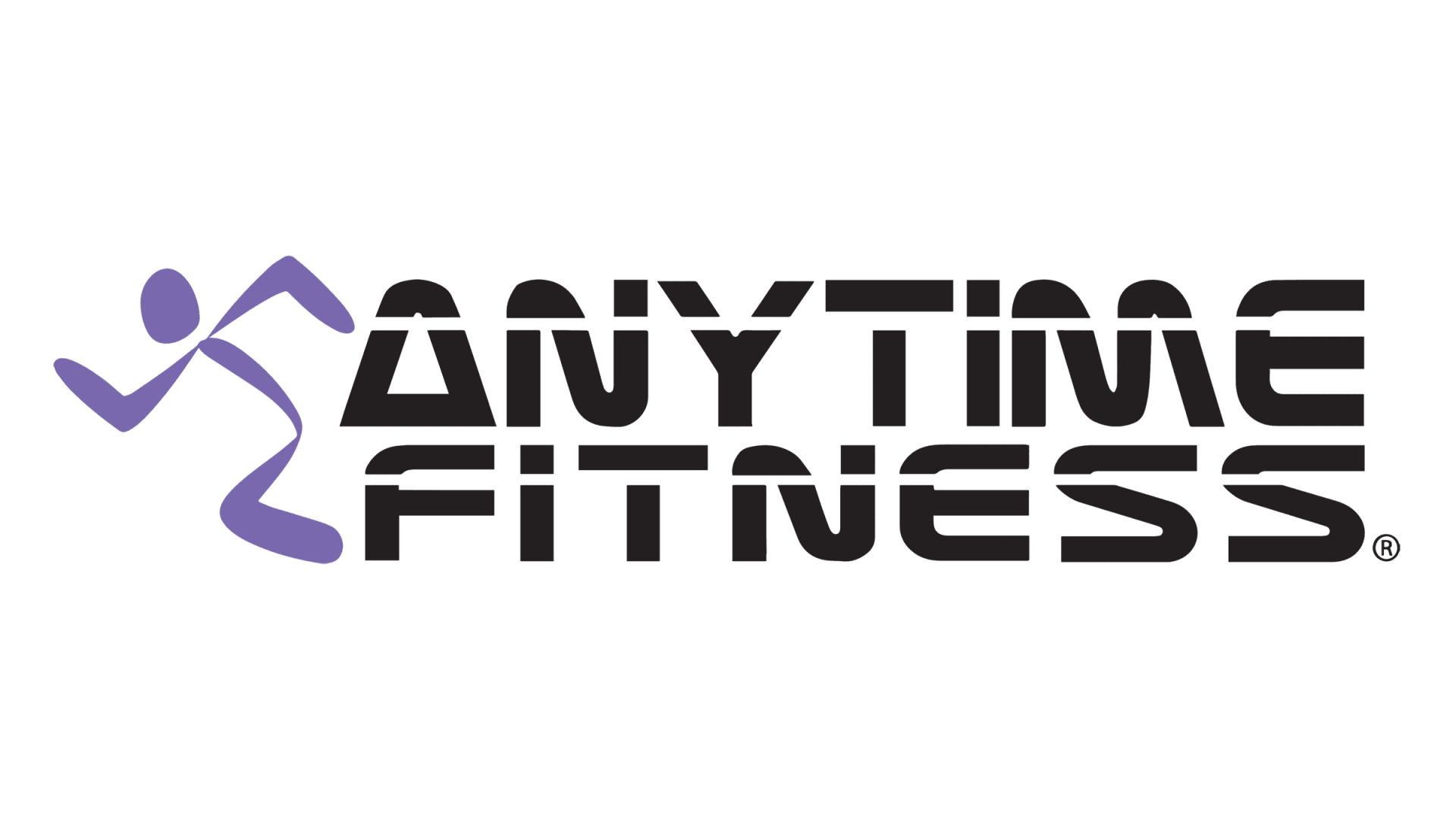How Do You Respond to Pain?
How Do You Respond to Pain?
'Catastrophic misinterpretations of pain as being harmful may give rise to pain-related fear, which in turn can initiate avoidance behavior intended to avert bodily threat. When protective action serves to reduce genuine bodily threat, it is highly adaptive, but when pain persists beyond healing time and turns chronic, it may paradoxically increase suffering and disability' - Meulders (2019)
The Fear Avoidance Model shows how interpretation of pain can lead to disability and the continuation of pain.
Avoidance can be adaptive in the short term, but highly problematic in the long term. So starting with small and easy movements that you are comfortable with is a good first step in managing your pain.
Pain is defined as "an unpleasant sensory and emotional experience associated with, or resembling that associated with, actual or potential tissue damage"- International Association For The Study of Pain
Pain often leads to inactivity or 'Rest', but is this best option?

During a consultation, we want to determine the factors that influence pain.
The way we respond to these factors and pain can affect our pain experience.
When pain persists beyond tissue healing times, An increase in negative moods, catastrophizing and fear of movement, can direct us towards an avoidance cycle and disability.
By learning about pain, setting valued life goals and progress movement, we can aim to get out of the avoidance cycle and towards recovery. However, identifying the avoidance strategies will challenge commonly held beliefs about pain and movement.
Don't fear movement, fear not moving!






























